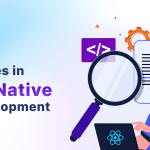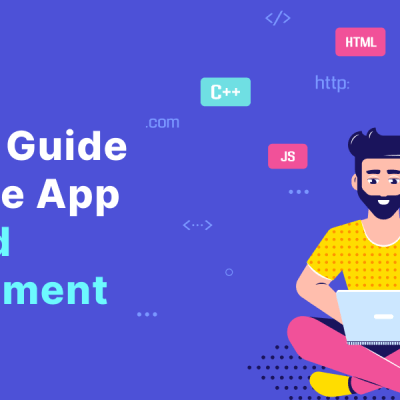Introduction
It is 2024 and the mobile app maintenance landscape is as dynamic as it could be. Maintaining the multifarious features of mobile apps frequently such as communication, online shopping, information access, content creation, and games can get a little overwhelming.
Be that as it may, consistent maintenance of these apps is their only way of survival which is why it is an integral part of the mobile app development process.
Despite understanding this, multiple businesses choose to sideline it focusing more on the features and functionality of the app.
In today’s landscape, the average cost for app maintenance encircles around 20.7% of your initial app development cost. By that logic, if you spent $100 on building your app, 20 dollars, and 70 cents would go to its well-being.
Personally, that is 70 cents a little too much for me. But you might be different!
In this article, we will take a deep dive into the mobile app maintenance aspect of app development and predict a few things that could potentially affect this market.
Factors Affecting Mobile App Maintenance in 2024
Mobile apps today are a major source of income for a lot of people around the world.
To set up the context even further, by 2025 the number of smartphone users in the US is estimated to elevate to 320 million.
That covers almost the entire population of the States.
This highlights the amount of work that app developers would have on their hands. Their job is not just to design and code the app for public use, but also its frequent maintenance to ensure its upkeep.
This is why it is important to focus on the factors affecting mobile app maintenance to understand the consequences of not maintaining it right.
Let us take a look at them:
🛠 Fixing Bugs and Issues
Bug issues and runtime errors become non-existent if your app is maintained regularly. Various factors affect the cost of updates and how frequently they can be exercised.
Some of these factors include the complexity of the app and functionality refurbishments.
A quick fix might cost you nominal time and minimal expense however, updating a functional aspect can eat up weeks and bags of finances from you.
📊 Analytics
Speaking of bugs and issues, it has become the need of the hour for companies to monitor and track such issues surfacing in their apps.
Knowing they exist helps in eliminating them which in turn delivers an uninterrupted user experience that can only be accomplished through tracking and analysis.
Analytics tools such as Google Analytics might help you out with this providing deep insights into the overall app performance and user behavior helping you in making reasonable decisions.
There are other tools as well that help you in analyzing your app’s performance costing differently than each other.
📱 User Interface Updating
The success of an app rides on how seamless its user experience is. With dynamic user behavior and market trends, your UI/UX design of the app must be dynamic as well.
The more frequently you update your app, the happier the users are.
☁ Hosting Maintenance
Once you have ticked all the boxes mentioned above, you are also going to need a hosting server with a considerable price. This is another factor that is responsible for the outstanding cost at the end.
The price range of hosting servers ranges from $70 to $230 monthly, based on elements like content, active users, and estimated growth.
📍 Location of Development Team
Where your team is located becomes a major factor in determining the app maintenance costs.
The cost of hiring a development company from India might be different from hiring one from the US. This is due to the varying service charges that differ from country to country.
Types of Mobile App Maintenance
Just to be safer than sorry, you should know the different kinds of maintenance services an app development company offers.
For regular updates or last-minute saviors, it is important to understand what value various maintenance types can bring to the table.
🌠 Perfective Maintenance
At an individual level, your app is doing good. Great, even! However, it can do much better since a large contingent of the audience consistently keeps on offering feedback about its features that work and don’t.
Perfective maintenance constantly processes such feedback, responding to it and improving the source code accordingly to provide a much better user experience every time.
⚠️ Emergency Maintenance
Any last-minute disruptive threats arising in the code are eliminated through emergency maintenance (hence the name).
Such issues are unpredictable and can impede the smooth functionality of the app. This is why they demand urgency and swift removal to ensure a seamless user experience.
🦾 Adaptive Maintenance
Let’s be honest, if it weren’t for the dynamic requirements of your audience, your app might be the talk of the town. To stay updated with the fluid needs of your audience, adaptive maintenance is required.
Such maintenance focuses on improving the OS version, imbibing hardware changes or updating them based on the requirements of the software environment.
⭕ Corrective Maintenance
This type of maintenance takes care of the already existing issues and flaws occurring in the system.
Such maintenance includes design, application logic, and coding-related issues to make sure that the app has seamless functionality.
Cost Management Strategies
Now that you have an idea of how things are in the realm of mobile app maintenance, we can ease into the topic of how to manage the cost that goes behind app maintenance.
Some of the strategies that can help in the cost management of app maintenance are:
Build an MVP
MVP or a Minimum Viable Product is a short-term solution to the different issues that you are trying to consider with fundamental features.
It allows you to account for your users’ needs, accumulate their feedback, and construct the final product accordingly.
You can also keep an eye out for your competitors and follow what trends they are following to upgrade your app based on those trends.
Hence, to reduce app development or maintenance costs, make sure to build an MVP.
Strategize with your App Development Partner
A dependable app development partner will provide cutting-edge app maintenance services whenever required. The service provider will let you know all the expenses regarding app maintenance along with the hidden costs.
This helps you out in planning your budget in a structured manner and make informed decisions to avoid unorganized pitfalls.
Continuous Testing and Automation Tools
Such a strategy involves ongoing testing across the app’s development even after it is released.
Testing your app continuously is like meditating every day to keep your mind and body clean and pure. It not only prevents any potential issues but also engages a wider audience as they witness the care you show for your app.
The medium through which such testing can take place is called an automation tool. These tools help in streamlining the app testing, enhancing its speed and efficiency. They are specialized equipment to diagnose and prevent the issues occurring in the app.
Streamlined development practices
These practices are structured approaches that are crucial in ensuring the development and maintenance of the app go both efficiently and cost-effectively.
Some of these methodologies include:
Agile Methodologies- Such an approach divides the app into smaller pieces of information so that they can become more organized and manageable.
They encourage team collaboration, offer strategies and a roadmap, and adapt to the changing project requirements.
Code Reviews- The app’s codebase is systematically evaluated by code reviews created by experienced developers.
Such reviews can aid in identifying and eliminating coding errors, keeping the code quality top-notch, and making sure the app has a strong foundation.
Continuous Integration- The consistent implementation of new coding features into the existing code is called continuous integration.
The conflicts that are spotted through this are resolved early on ensuring the maintenance and sustainability of the app even when new features are introduced.
Such practices are compasses for organizing an app development process which otherwise, can lead to a haphazard manner of developing apps.
This results in increased cost of maintenance at the end of the final product.
Scalable and Modular Architecture
Scalable and modular architecture is nothing but the foundation and the blueprint of the app.
Such an architecture offers you leeway to move the pieces of the app wherever and however you want to. Some of the features of this architecture include:
- Well-Structured Code- The app’s code is well-balanced as if tagging boxes with specific items. This organization of code helps in the elimination of bugs and offers smooth functionality to the app.
- Modular Outlook- If you imagine your app to be a set of building blocks, each block must represent a purpose and a function. Stacking these blocks atop of each other, modular design allows you to swap them with regards to each other without affecting the building as a whole.
These features help in identifying and removing potential errors in the code, organizing and structuring them in a way that makes the development process much more convenient to follow.
Without these features, your program becomes a tangled mess of code which could later impact the cost of maintenance on the app in its final stage.
Conclusion
If you made it here, it means that you understand the current landscape of mobile app maintenance in the app development industry. Although not much has changed from the previous year in app maintenance, there are many things to look forward to in 2024 for the future of mobile app maintenance.
Advancements in mobile app maintenance are necessary this year due to the lack of app quality and the increase in app quantity in App Stores.
If the maintenance of the app is done right, the quality of user experience will automatically enhance which could earn the company a loyal customer.
Frequently Asked Questions (FAQ’s)
1. Why is mobile app maintenance crucial in 2024?
To sustain optimized performance, stay in sync with evolving technologies, and meet user expectations. Mobile app maintenance not only does all of the above but also increases the app’s lifecycle increasing its value in an overall digital landscape.
2. How does the complexity of an app affect its maintenance cost?
App complexity is directly related to the cost of app maintenance. Complex apps require more bug testing, debugging, and ongoing updates resulting in higher app maintenance costs. These expenses can be mitigated by streamlining app complexity through multiple efficient development methodologies.
3. What strategies can reduce routine maintenance costs without jeopardizing app quality?
Effectively managing routine maintenance contains strategic planning and automation. These routine processes can be streamlined by prioritizing tasks, allowing automated testing, and considering agile methodologies. This also optimizes cost maintenance without compromising app performance.
4. Are there any proactive measures to maintain long-term maintenance expenses?
Yes, there are! Proactive maintenance constitutes predicting and analyzing potential issues before they can worsen. Frequently updating dependencies, tracking performance metrics, and incorporating precautionary measures, in the long run, can reduce the app’s maintenance costs.






